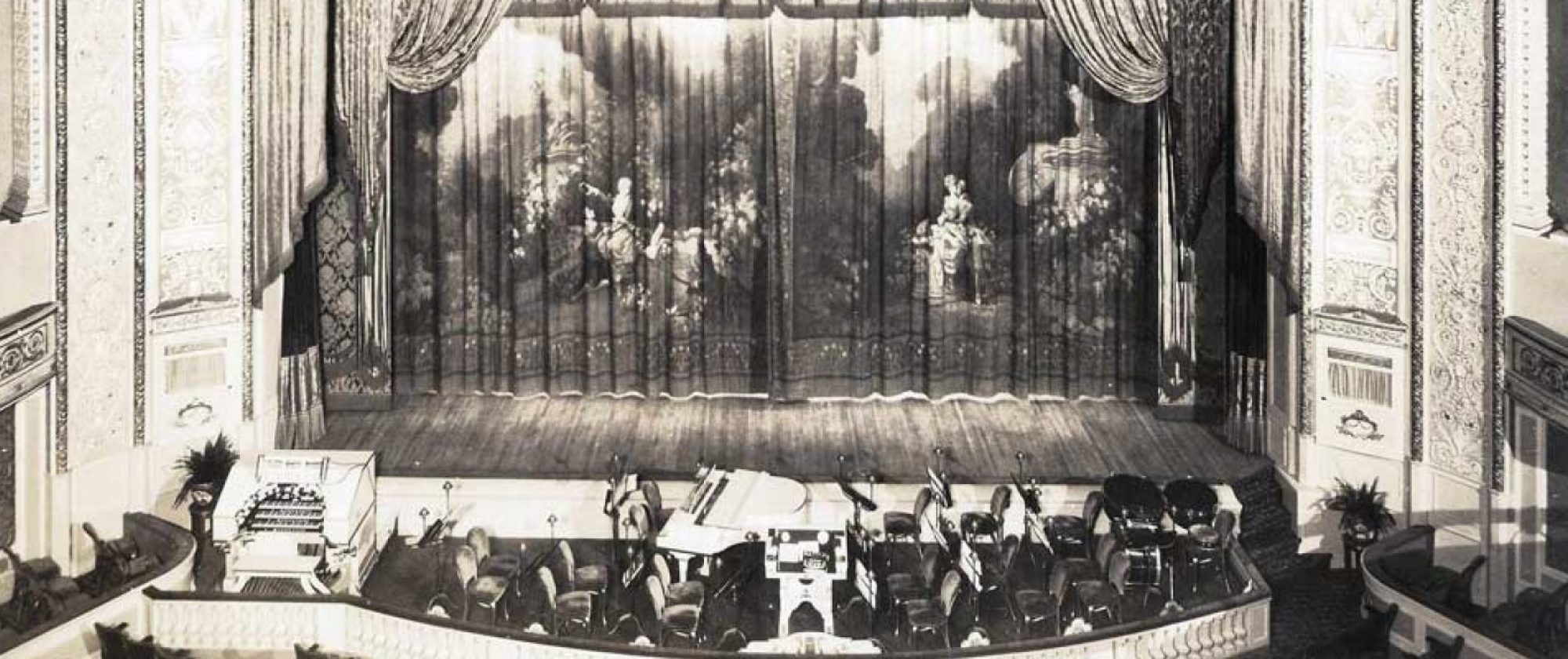“Rose Revue,” on after five o’clock, has rough going at that hour and wasn’t strong enough to hold and wasn’t strong enough to hold the people in. The feeble singing of a man and woman, whose only right to appear as public entertainers was their agility as dancers, failed to keep the audience seated until they got going at top speed. And directly they did, they went off and permitted their pianist to do several selection for what seemed an interminable number of minutes, This act was badly placed – in fact the whole was topsy-turvy.
Jim Toney was accorded a reception and the audience was palpably glad to welcome the return of Toney and Norman to vaudeville. Toney is one of those rare eccentric dancers who can sing and talk equally well. Their familiar turn earned then a tremendous hit.
Henry Santrey, with his band of 10 reduced to 9, did not seem to be as spontaneous as usual. They consumed only about two-thirds their regular allotment of time, with relatively little demand for more.
Ed and Birdie Conrad in songs of Ed’s own composition, with costume changes and singing and dancing, were mildly pleasing until their Chinese finish, when they ended with Ed’s sensational acrobatic stepping.
Moss and Frye, the fourth act in the show’s “laugh offensive,” ran next to closing, a spot they appear regularly assigned. Some more new matter may have been inserted, the straight remarking at the shambling entrance of the comic that the latter has the spring fever in the {illegible} and the early part of the routine building on that. The comedian fumbled a baseball “gag” which was also probably new. They did not seek an encore. When the men secure a good new harmony number they should insert it there.
Jimmy Lucas with Francene, opened intermission. Lucas has built up the comedy as expected, and he fared nicely considering the laugh-getters who preceded him. One thing Lucan misses is the box stunt, which has been a sort of trade mark with him. It’s reasonably sure he will evolve another that will fit. He offered a new song of his own composition, “The Only Girl Who Can Make Me Cry.” It is a mother song.
The Ford girls ran seventh and accomplished a flock of “bows,” with their hard shoe finish taking them across the finish line with speed. The costuming of the act is new, with the possible exception of the opening number, a hunting conception. For the Eddie Leonard but, they especially neat in knickers of violet-hued silk. For the Jap number the costumes were airy robes, while the final act was pretty design of the black and silver. The special orchestra is still bewigged. The men got something with a “Florodora” selection, and “Alice Blue Gown” from “Irene” was another of the new numbers in the routine.
14 Mins.; Full Stage. Barton and Lovera have constructed a rather pretentious vehicle to background the man’s cycling and the woman’s dancing, opening with a plush set with the woman’s costume to match. A Spanish dance and a dance labeled “Love and Temptation” is done by the woman, after which the same is burlesqued by the man on a unicycle. It carries class and comedy and should make good anywhere at either end of the bill. They were a hit at the corner.
14 Mins.; One. Sabrey D’Orsell is billed as “The Winter Garden Favorite in a Remarkable Song Review,” but she isn’t living up to the billing. Sabrey may have been a fave at the Garden, but she will have to change her style before becoming a fave in vaudeville, big or little. Miss D’Orsell has a voice, a lyric soprano of coloratura quality that reminds one somewhat of Bessie Abott. But Miss D’Orsell possesses none of that elusive quality called personality. She impressed her audience wrongly at the start, conveying a ort of a “I know I’m too good” idea over the footlights. She is singing three numbers, opening with a Scotch number, following with another semi-classical song, and closes with “Annie Laurie.” There seems to be entirely too much of a sameness in her selections, and she could vary to advantage by the introjection of a high class ballad. She should also be coached in the manner of taking bows.
“Butterfly Love” 15 Mins.; Full (Special Exterior). In “Butterfly Love” there is the germ of a mighty good idea which is lost sight of before the finish. The scene is laid in Japan and quite similar to the first act of “Madam Butterfly.” An American warship is at anchor in the harbor. On a hill overlooking the bay a little Japanese maid is seated. On comes a camera man. It is discovered she is not a Jap but a picture actress. Leading man a company is sick and she has ensnared an officer from the cruiser, who believes her to be a Jap and is willing to re-enact the John Luther Long table in real life. She keeps up the illusion and holds him for the love scenes, while the camera man is grinding away in the background. After the picture is completed, the girl discloses the truth. But Mr. Sailorman is now fully entranced and a wedding looms in the distance. There are several numbers, solos and duet, but the comedy element is lacking. This could be rectified easily, for the camera idea offers all sorts of opportunities to get laughs. The act as it stands will just do for small time.
